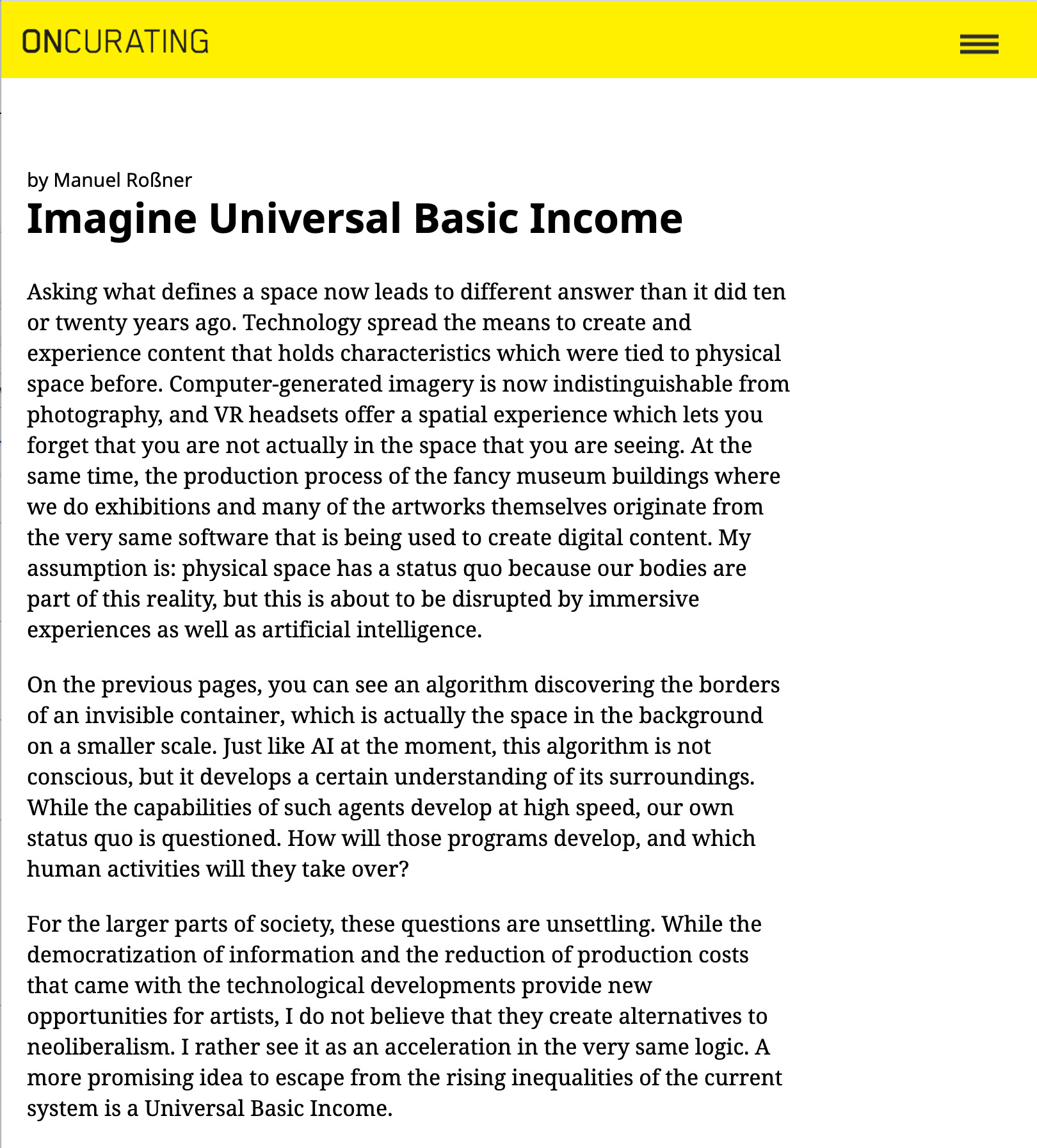
Asking what defines a space now leads to different answer than it did ten or twenty years ago. Technology spread the means to create and experience content that holds characteristics which were tied to physical space before. Computer-generated imagery is now indistinguishable from photography, and VR headsets offer a spatial experience which lets you forget that you are not actually in the space that you are seeing. At the same time, the production process of the fancy museum buildings where we do exhibitions and many of the artworks themselves originate from the very same software that is being used to create digital content. My assumption is: physical space has a status quo because our bodies are part of this reality, but this is about to be disrupted by immersive experiences as well as artificial intelligence.
